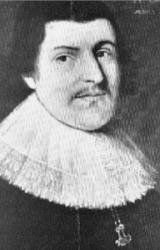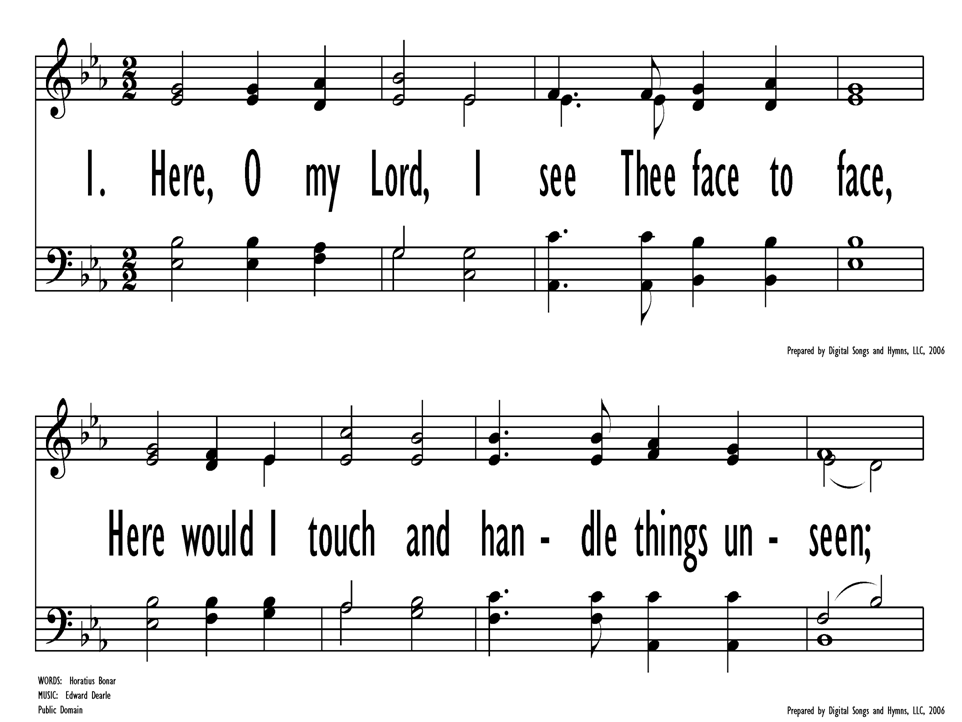- |
User Links
FARLEY CASTLE

FARLEY CASTLE
Composer: Henry Lawes (1638)Published in 60 hymnals
Printable scores: PDF, MusicXML
Audio files: MIDI, Recording
Composer: Henry Lawes
 Born: January 5, 1596, Dinton, Wiltshire, England.
Died: October 21, 1662, London, England.
Buried: In the cloisters of Westminster Abbey, London, England.
Lawes, tutor to the daughters of the Earl of Bridgewater, is best known as a composer. He became a Gentleman of the Chapel Royal in 1626, and a member of the "King’s Musick" in 1631. He wrote over 400 vocal pieces, as well as anthems and instrumental compositions. His works include:
Choice Psalmes Put into Musick for Three Voices, 1648
Ayres and Dialogues (London: 1653)
Sources:
Frost, p. 680
Hughes, pp. 467-68
Nutter, p. 460
Stulken, p. 292
--www.hymntime.com/tch
Go to person page >
Born: January 5, 1596, Dinton, Wiltshire, England.
Died: October 21, 1662, London, England.
Buried: In the cloisters of Westminster Abbey, London, England.
Lawes, tutor to the daughters of the Earl of Bridgewater, is best known as a composer. He became a Gentleman of the Chapel Royal in 1626, and a member of the "King’s Musick" in 1631. He wrote over 400 vocal pieces, as well as anthems and instrumental compositions. His works include:
Choice Psalmes Put into Musick for Three Voices, 1648
Ayres and Dialogues (London: 1653)
Sources:
Frost, p. 680
Hughes, pp. 467-68
Nutter, p. 460
Stulken, p. 292
--www.hymntime.com/tch
Go to person page >Tune Information
| Title: | FARLEY CASTLE |
| Composer: | Henry Lawes (1638) |
| Meter: | 10.10.10.10 |
| Incipit: | 13453 45671 17615 |
| Key: | C Major |
| Copyright: | Public Domain |
Texts
Here, O my Lord, I see Thee face to faceMost glorious Lord of Life that on this day
Filled with the Spirit's Power
Alternative Tunes
Notes
FARLEY CASTLE, composed by Henry Lawes (b. Dinton, Wiltshire, England, 1596; d. London, England, 1662), was first published in treble and bass parts as a setting for Psalm 72 in George Sandys's Paraphrase upon the Divine Poems (1638). In the British tradition the tune is used as a setting for Horatius Bonar's communion hymn "Here, O My Lord, I See Thee," but now the tune is also often set to Peacey's text.
Lawes was a well-known composer, singer, and teacher in seventeenth-century England. His teaching career began with his appointment as music tutor to the daughters of the Earl of Bridgewater. Later he was a voice teacher to professional singers. In 1631 he was appointed musician in the court of Ring Charles I; he lost this position during Cromwell's reign but was reappointed at the Restoration. Lawes was known as a composer of some four hundred songs, many of which were used in stage productions. He and John Milton (PHH 136) collaborated on the famous masque Comus (1634). The writer of about twenty anthems, including one for the coronation of Charles II in 1660, Lawes also contributed tunes to George Sandys' Psalms (1638) and to Choice Psalms put into Musick for three Voices (1648), which he published with his brother. Lawes' tunes were reintroduced to modern hymnody when Ralph Vaughan Williams (PHH 316) included five of them in The English Hymnal (1906).
FARLEY CASTLE has a rather angular contour; its active harmony is suited to part singing. Use light accompaniment and a measured pace for this prayer hymn.
--Psalter Hymnal Handbook
Timeline
Arrangements
Piano/OrganMore Piano/Organ... |  |
ChoralMore Choral... |  |
HandbellsMore Handbells... |  |
PowerPointMore PowerPoint... |  |
Harmonizations, Introductions, Descants, Intonations
|
Organ Solo
|


 My Starred Hymns
My Starred Hymns


